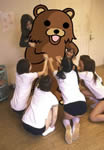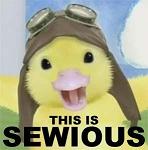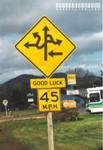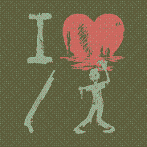 |
 |
|
UER Store
|
|
sweet UER decals:

|
 |
 |
|
Activity
|
|
784 online
Server Time:
2024-05-13 21:57:01
|
|
 |
 XavierReed

 | |  | Broken Walls and Rusted Steel: The Finished Research Project
< on 1/16/2008 4:15 AM >
|  | | | So this is the final copy of the research paper I did on urban questions for my paper and as promised here is the final result. The formatting is not correct in this post because I suck at technology and I don't know how to even html/pdf it but yeah. Love it or hate it this is it.
thanks again to everyone who helped out.
Broken Walls and Rusted Steel:
A Glance at Urban Ruins In the Context of Exploration
On a cold day in December, during my junior year of high school myself and two friends decided to go exploring, exploring in a world of rusted steel, broken glass, dark corners, and decay; an urban ruin of a once thriving factory in downtown Columbus. We arrived a few hours before dark, just as the sun was beginning to get low in the grey sky, and upon stepping out of the car and onto the broken sidewalk we saw the building ahead of us, rising out of the grey, cracked concrete like the austere skeleton of a fallen titan. After catching our breath, we plunged into a new world.
The place we found ourselves in was raw and unique, filled with a menagerie of debris and defunct, tired machines on each level. We explored in earnest, peering into missing sections of the floor, gazing at the twisted metal, examining the artifacts that littered the dim hallways. Soon, the sun began to disappear, filling the sky with evening color, and as we had no flashlights we took that as our cue to leave. Then, as we walked out of the ruins and onto the street we noticed that there were lights on in the building next to the one we had just exited. “That’s odd,” one of us exclaimed, “I thought this factory was completely closed.” As it turns out, that was actually true and as we drove past the building on our way to eat gyros we stopped and looked at the fire chief car parked out front. Then we looked up at the factory walls and collectively said, “Oh, it’s not open, it’s just on fire.”
That was my introduction into the world of urban exploration: a rapidly growing sub-culture of people who explore the hidden ruins, drains, rooftops, bridges and buildings of their cities for a variety of reasons. In its most basic form, urban exploration is a simply form of tourism; an entertaining way to escape the rat race, enjoy the beauty of abandoned places and to experience the thrill of adventure. However, on a deeper level, it can be much more than that. It can also serve as a form of archeology, or a way to gather authentic and unique experiences. Moreover, it is capable of transforming the explorers own concepts and boundaries of the world in ways that cause personal growth and provide a glimpse of the hidden infrastructure of the modern world.
There is something undeniably attractive about abandoned places. They capture our imaginations and hold a sort of unusual beauty that is both tragic and magnificently unique. The colorful mold that so often graces wet floors and ceilings, the varying shades of gray concrete, red rust, black burnt wood, yellow warning signs, and sun or moonlight pouring through cracked, broken windows all contribute to the peculiar beauty of an abandoned place. According to the late Jeff Chapman or Ninjalicious as he was often called, “Abandoned buildings can be incredibly moving and beautiful places, the whole tragic process of decay and entropy is both sad and breathtaking to behold” (Trigg 182). This is certainly true, and many urban explorers have special memories of places that were particularly breathtaking or unique. For example, one explorer from Columbus Ohio remembers a particularly special experience that he had one year in the dead of winter:
"When we got to the four-story building… its basement was completely frozen. I never really made the descent into it because I was either alone or the water was in a liquid state (normally it was mid-shin or knee deep), and it wasn't the cleanest water. I probably would have gone before winter if I had uber-boots, but once we were down there, it was magical. Before us stood a broken water main with a magnificent arch reaching out a good meter or so; just that sight alone, one flashlight, surrounded in darkness. It was beautiful." (Cabrera)
The beauty of forgotten places, such as the broken water main, is especially conducive to photography, an art form that has become inextricably connected to urban exploration. Accordingly, when most people explore they photograph the site and post their work on various websites and forums dedicated to urban exploration. These pictures allow people to share their experiences and document the places they have been and overtime they have created a massive database of the ruins, drains, bridges, rooftops, and extraordinary places that dot the urban landscape across the world (Ninjalicious, Infiltration).
Some explorers however use photography and exploration as a way of discovering the history of their cities. Lefty Leibowitz, a leader of an exploration group known as the Jinx Project in New York City states that, “Just as an archaeologist digs beneath the surface to uncover layers of measuring and clues to the past, so does the urban explorer enter into a dialogue with the living ruins of the city” (Deyo, Leibowitz 56). For many, this sort of documentation and historical dialogue is one of the most attractive aspects of exploration. From personal experience I can say that it is fascinating to walk down the halls of an abandoned building and examine artifacts from the lives ordinary people. In attempting to piece together the history of a building through your own prior knowledge and the few clues that remain there you assume the role of a detective or a tracker. Moreover, by assuming that role the lives of the people who once worked and lived there become almost tangible. In the movie Echoes of Forgotten Places the narrator states that, “The forgotten places speak to us. If we choose to listen, we will honor our dead.” Accordingly, one could argue that by exploring urban ruins we are giving longevity to recent history while simultaneously paying our respects to the ordinary people who built the modern world (Echoes).
Accordingly, it is interesting to think that these buildings have been overlooked for their historical value simply because they represent something only recently dead (Echoes). Furthermore, it raises the question as to why we as a society rarely pay homage to everyday things? Subsequently, Echoes of Forgotten Places suggests that the reason why we overlook abandoned areas is because “They were not palaces or temples but merely work places of common people,” and that “We want to ignore our history until it becomes ancient and somehow important.” Both of these statements ring especially true when one looks at the masses of people that flock to grandiose and ancient ruins each year such as the Coliseum in Rome, the Parthenon in Greece, or the Ruins of Great Zimbabwe in Africa.
Some explorers and philosophers would argue that, in addition to providing the explorer with a glimpse into the history of a city, urban exploration also provides a way for people to see beyond the veil that hides the infrastructure of a city from the eyes of the public (Ninjalicious 48). Dylan Trigg argues in his book, the Aesthetics of Decay, that as an abandoned building begins to fall apart it opens itself up in a way that reveals the guts of a city. Additionally, this argument is further supported in the book Invisible Frontier where in one section L.B. Deyo describes an abandoned small pox hospital from a crumbling wall six or seven stories off the ground:
"I’m looking down into a cross section, a breakaway diagram of 19th century building arts. This is the advantage of collapse. No one who walked the halls of this building, when it was new and whole could see what I see now. The seams of the floor the mixture of the concrete, the bones of the structure in a one to one scale model." (Deyo, Leibowitz, 93)
Subsequently, this desire to see behind the hidden infrastructure of our world lends itself to another form of urban exploration in which the individual explores active buildings (Trigg 179). Generally, the motivations behind exploring an active sight appear to be: the desire to access a building’s roof in order to catch a particularly mouth-watering view, find access to steam tunnels, infiltrate parties, or simply to explore someplace where one is not supposed to be (Ninjalicious 107). Although arguably, the excitement of exploring an active site comes largely from the thrill of infiltration and the risk of being caught it would also appear that this provides yet another opportunity to peer behind the veil. Accordingly, in Ninjalicious’s book Access All Areas he suggests that going beyond the safe sterile areas that are only open to the public is a key part of urban exploration culture (48).
To most people, urban exploration must come across as a particularly weird hobby. Its followers are required to push both their own limits and the limits of the mainstream world. They spend a good portion of their free time exploring places that range from moderately to very dangerous. In doing so, they take the huge risk of possibly getting dirty. God forbid. Moreover, the hobby tests the limits of public boundaries by ignoring the signs that say “beware danger” in order to step outside of normal prepackaged entertainment and to have an adventure that is unique, authentic, and even slightly dangerous (Ninjalicious 120-121).
Ultimately, therein lies the greatest irony of urban exploration, which is that in order to escape from the ordinary the explorer seeks out the ruins of once ordinary places.
However, despite the irony, the desire to have an “out of the box” experience is a common driving force for many urban explorers, and furthermore, the freedom to have an unstructured active experience has become one of the major bulwarks of an urban exploration outing (Teotonio 2). One explorer described the uniqueness of exploration when she said, “When else can one stand in the shadow of a transformer for a power plant? Or push the buttons on an x-ray machine? Or read someone's diary? I've done all that and more in the time I've been exploring” (“Sarabellum”) How unusual and beautiful!
Too often in this modern world are we led by the hand through the raw experiences of others instead of creating our own. Also, in many circumstances, people live vicariously through various forms of the media such as videogames or television, and while these things are not necessarily evil L.B. Deyo would argue that “Whatever your aversion to heat, discomfort, high precipices, and live third rails, nothing argues against exploration like a warm couch, a remote control. The real enemy of adventure is eighty-five television channels” (210). Although this statement is true in many ways, others would argue that television and exploration are similar in that both are forms of escapism. This statement however is inaccurate and forces one to ask, what is reality? Is it comprised of the mundane tasks and routines of everyday life? Is reality simply made up of our working lives? And if that is the case then why do we choose to invalidate our experiences outside of work with the label of escapism? Arguably, urban exploration is indeed a way to ditch the chaos of the working world. However, it differs from many other forms of escapism, like television, because it challenges its followers both physically and mentally in a way that is conducive to personal growth.
Why though, is that the case? What is it about exploring strange and abandoned buildings that helps us to grow as individuals? It seems like the secret of this lies somewhere in the way in which urban exploration is able to sharpen the mind and focus the thoughts of the explorer. Perhaps this is due to the profound quiet of abandoned buildings where sometimes all that can be heard is your own footssteps, the wind, and the sound of dripping water. Quiet like this is uncommon in most urban environments and for some explorers the opportunity to stop and think in a seemingly timeless place is a rare gift. Accordingly, maybe it’s the danger of urban exploring that sharpens the mind and that by walking on the edge and allowing our awareness to expand we can gain insights into our own psyche. One urban explorer, when speaking about subterranean tunnels, said that “Being underground tends to focus your attention, rather than let your mind wander” (Echoes). If nothing else, the sometimes monumental task of facing ones fears in the context of urban exploration seems like it would be almost guaranteed to bring about personal growth. For example, one explorer who is afraid of water and confined space says that her favorite memory of urban exploration was of an adventure in an abandoned mine. In the mine she had to wade through deep water and wriggle through crawl spaces. Although she did not specify how this may have helped her grow, it is noteworthy that her best experience was one in which she was forced to face two of her deep seated fears (“Shelly!”).
Moreover, two explorers that responded to an interview through infiltration.org claim that urban exploration has helped them with social anxiety disorder. One woman said that exploring helps her to relax and get away from the modern world while the other credits urban exploration for helping her actually overcome the disorder. She says, “I mean, how can you be afraid of the grocery store when you've climbed through windows, stepped over dead cats, and walked across catwalks that are hundreds of feet over the ground?” (“Sarabellum”). It is absolutely amazing that the act of urban exploration could help someone in this way.
In addition to growing from the rigors of urban exploration many say that they have learned lessons and gained insights from the buildings themselves. For example, another urban explorer says that being in decaying buildings “Shakes the very foundation of the youthful notion that nothing will ever grow old and die” (R. Neutzling) Also, the brother of this explorer was so moved by what he saw in decaying places that it even inspired him to choose a career in urban planning. He hopes that he can protect the beautiful decaying factories, and row-houses of a city and make them livable once again (A. Neutzling). Subsequently, in light of the testimonies of these explorers one can see that the challenges of urban exploration often times harbor many important lessons. Also, it can be stated that the walls of a decaying city have their own unique wisdom to impart on us. An urban explorer once said in an interview on NPR that when it comes to urban exploration,
"You have to simply believe that places that are off limits are interesting places that are worth checking out and that the entire notion that there’s some kind of a sacred wall around these off-limit places is only real as you allow it to be. And if you just walk through, it’s like Alice through the looking glass, you just have to be willing to stick your head through and you’ll find that not only are you unscathed, but that you’ve benefited greatly from the experience." (“Laughing Boy”)
In this statement “Laughing Boy” has summed up one of the most basic and fundamental pieces of the urban exploration phenomenon. Moreover, this quintessential characteristic seems to be all about looking through the glass, seeing behind the scenes of our world and peering past the illusory veil that hides us from ourselves and the reality of the places in which we live.
We are standing in the bowels of a building in gestation, a place waiting to be reborn so that it may provide safe harbor for the lives of many people. It is not decaying or abandoned, but it is empty, stripped, raw. Its identity is in transition, and the naked, unveiled bricks speak to both the past and future of this place. We however, are locked in limbo and instead bear witness to the beautiful point of transmutation. It is here, in this place that urban ruins silently exist, devolving slowly over time and taking as they go the evidence of our past. Undoubtedly, these ruins call out to us, and those that answer do so for a myriad of reasons. Some do it for the thrill of trespassing or adventure, and others still come to observe and photograph the melancholy beauty of neglect and decay. Ostensibly, urban exploration serves simply as a form of entertainment, a means to create art, or a way to experience something out of the ordinary. However, if one allows it to be something more it can become an incredible way to connect to the past and engage in transformative experience. By exploring the world of urban ruin we gain the opportunity to stand in a place of evolution, and from our vantage point of the crumbling walls we may see the naked infrastructure of our world and ourselves.
Works Cited:
Deyo, L.B, David “Lefty” Leibowitz. Invisible Frontier: Exploring the Tunnels, Ruins, and Rooftops of Hidden New York. New York: Three Rivers Press, 2003.
Cabrera, Drake. “Interview for Urban Exploration paper that I am doing.” E-mail to the author.1 Dec. 2007
Echoes of Forgotten Places. [videorecording] Scribble Media, 2005.
“emck00”. “Research Paper.” Email to the author. 4 Dec. 2007
Forti, Samuele. “Research Paper on UE.” Online posting. 4 Dec. 2007. UE Main Infiltration Forum. 4 Dec. 2007 <http://www.uer.ca/forum_showthread.asp?
fid=3&threadid=50861>
Ginsberg, Robert. The Aesthetics of Ruins. New York, NY: Rodopi, 2004.
“Laughing Boy.” Interview. All Things Considered. NPR, 18 Jul. 2000.
Leibowitz, Lefty, L.B. Deyo, Renee Rogers. Jinx Magazine. <http://jinxmagazine.com>
Nakao Annie “Subculture/ Going Underground/ Urban explorer documents the hidden world of speakeasies, sewers, and subways” San Francisco Chronicle 03/06/2005
Neutzling, Andrew. “Interview for Urban Exploration paper that I am doing.” E-mail to the author. 30 Nov. 2007.
Neutzling, Robert Anthony. “Interview.” E-mail to the author. 6 Dec. 2007
Ninjalicious. Access All Areas: a user’s guide to the art of urban exploration. Toronto: Ninjalicious, 2005.
Ninjalicious. Infiltration. 2007. 27 Nov. 2007 <http://infiltration.org/home.html>
Teotonio, Isabel. “‘It’s about going places nobody knows about’ Echibit features city’s unknown” Toronto Star 9/15/2005: B01
Trigg, Dylan. The Aesthetics of Decay: Nothingness, Nostalgia, and the Absence of Reason. New York: Peter Lang, 2006.
“Sarabellum”. “Research Paper on UE.” E-mail to the author. 6 Dec. 2007
“Seicer”. “Paper.” E-mail to the author. 5 Dec. 2007.
“Shelly!”. “Research Paper on UE.” E-mail to the author. 4 Dec. 2007
[last edit 1/16/2008 6:15 AM by XavierReed - edited 2 times]
|
|
Explorer Zero
     
 | |  | |  | Re: Broken Walls and Rusted Steel: The Finished Research Project
<Reply # 1 on 1/16/2008 4:48 AM >
|  | | | You lost me at "we plunged into a new world".
|
|
kowalski
   
 | |  | Re: Broken Walls and Rusted Steel: The Finished Research Project
<Reply # 2 on 1/16/2008 4:56 AM >
|  | | | You lost me when you didn't space your paragraphs for web.
|
|
XavierReed

 | |  | Re: Broken Walls and Rusted Steel: The Finished Research Project
<Reply # 3 on 1/16/2008 5:58 AM >
|  | | | at this point I really could care less about whether you guys like it or not. I'm just posting the paper like I promised I would.
|
|
kowalski
   
 | |  | Re: Broken Walls and Rusted Steel: The Finished Research Project
<Reply # 4 on 1/16/2008 6:04 AM >
|  | | | Posted by XavierReed
at this point I really could care less about whether you guys like it or not. I'm just posting the paper like I promised I would.
|
Way to take pride in your work. Honestly, if you went back and edited it so there was a blank line between each paragraph, I would be 100% more likely to read it.
|
|
XavierReed

 | |  | Re: Broken Walls and Rusted Steel: The Finished Research Project
<Reply # 5 on 1/16/2008 6:06 AM >
|  | | | I would be happy to do that for you.
|
|
seicer
     
Location: New York
Gender: Male

 | |  | |  | Re: Broken Walls and Rusted Steel: The Finished Research Project
<Reply # 6 on 1/16/2008 6:07 AM >
|  | | | Damn Kowalski. Is there not a thread where you can't come in and bust someone's balls for ... a paragraph break?
I was able to read it perfectly fine and thought that it was an excellent paper. Paragraph breaks or not. Who fucking cares.
Abandoned |
|
kowalski
   
 | |  | Re: Broken Walls and Rusted Steel: The Finished Research Project
<Reply # 7 on 1/16/2008 6:10 AM >
|  | | | Posted by seicer
Damn Kowalski. Is there not a thread where you can't come in and bust someone's balls for ... a paragraph break?
|
You know, I only do it when I think there's a strong possibility that you and I will get to wrestle at the end of it.
|
|
blackhawk
  
This member has been banned. See the banlist for more information.
Location: Mission Control

UER newbie
 | |  | |  | Re: Broken Walls and Rusted Steel: The Finished Research Project
<Reply # 8 on 1/16/2008 8:00 AM >
|  | | | Posted by 2Xplorations
You lost me at "we plunged into a new world".
|
I think this one could even take the fun out of sex with less than a paragraph.
Just when I thought I was out... they pulled me back in.
|
|
ActionSatisfaction Esq.
       
Location: Newark, NJ
Gender: Male

Action always satisfies
 | |  | Re: Broken Walls and Rusted Steel: The Finished Research Project
<Reply # 9 on 1/16/2008 2:19 PM >
|  | | | I found this to be a wonderful article actually. If you actually take the time to read it, it's indeed very well put together and flows smoothly. It shines a very positive light on the hobby as well. Great job and good luck!
"The things that will destroy America are prosperity-at-any-price, peace-at-any-price, safety-first instead of duty-first, the love of soft living, and the get-rich-quick theory of life." - T.R. |
|
desmet
   

When the going gets weird, the weird turn pro.
 | |  | |  | |  | Re: Broken Walls and Rusted Steel: The Finished Research Project
<Reply # 10 on 1/16/2008 3:45 PM >
|  | | | What I read sounded good...too tired for all those words right now.
|
|
SaraBellum
        
Berkshire Hunt
Location: Villa Villekulla
Gender: Female

Coming to a cinema near you this summer.
 | |  | |  | Re: Broken Walls and Rusted Steel: The Finished Research Project
<Reply # 11 on 1/16/2008 4:40 PM >
|  | | | Thank you for quoting me warmly and accurately. I enjoyed your paper quite a bit, and I hope you get a good grade on it.
[01:47:56] <GreyDeath> Sara just stares her enemies into submission and eventually madness
"You can either be wise or a bad-ass gangsta, but not both. You must choose your path." ~~metawaffle |
|
don cornelius
    
This member has been banned. See the banlist for more information.
Location: Your asshole.

Proud Parent
 | |  | |  | Re: Broken Walls and Rusted Steel: The Finished Research Project
<Reply # 12 on 1/16/2008 5:38 PM >
|  | | | you lost me with to many words.
40+ year olds with Myspace pages are not cool, they are pediphiles on the prowl. Buyer beware. |
|
XavierReed

 | |  | Re: Broken Walls and Rusted Steel: The Finished Research Project
<Reply # 13 on 1/16/2008 6:06 PM >
|  | | | Posted by u25680
you lost me with to many words.
|
It's a research paper. It's supposed to have lots of words.
|
|
blackhawk
  
This member has been banned. See the banlist for more information.
Location: Mission Control

UER newbie
 | |  | |  | Re: Broken Walls and Rusted Steel: The Finished Research Project
<Reply # 14 on 1/16/2008 8:15 PM >
|  | | | ...if it doesn't have pictures, it never happened!
Just when I thought I was out... they pulled me back in.
|
|
Jonsered
     
Location: Back in New Mexico where I belong
Gender: Male

Dressed for a scarecrow ball.........
 | |  | |  | |  | Re: Broken Walls and Rusted Steel: The Finished Research Project
<Reply # 15 on 1/16/2008 8:17 PM >
|  | | | Don't let em get to you XavierReed. Everybody does this for their own reasons, research papers included. You did a fine job, and as Sara said, I hope you got a good grade.
I have changed my personal exploring ethics code. From now on it will be: "Take only aimed shots, leave only hobo corpses." Copper scrappers, meth heads and homeless beware. The Jonsered cometh among you, bringing fear and dread.
|
|
yellow_wallpaper

Location: Victoria, Canada

If you're not dirty, you're not doing it right.
 | |  | Re: Broken Walls and Rusted Steel: The Finished Research Project
<Reply # 16 on 1/16/2008 10:14 PM >
|  | | | Awesome job. Flowed smoothly and was interesting to read!
"...let us step into the night and pursue that flighty temptress, adventure." - Dumbledore |
|
LostAmerica
 
Location: The West
 | |  | |  | Re: Broken Walls and Rusted Steel: The Finished Research Project
<Reply # 17 on 1/16/2008 11:01 PM >
|  | | | Nice, nice, very nice.
Hope you get an A.
www.lostamerica.com |
|
XavierReed

 | |  | Re: Broken Walls and Rusted Steel: The Finished Research Project
<Reply # 18 on 1/17/2008 8:54 PM >
|  | | | I'm glad you guys liked it. and yes I did get an A.
|
|
LunarLumen
   
Location: Merrimack Valley, Massachusetts
Gender: Male

What Are You Looking At?
 | |  | Re: Broken Walls and Rusted Steel: The Finished Research Project
<Reply # 19 on 1/19/2008 5:32 PM >
|  | | | Hey XavierReed,
Broken Walls and Rusted Steel was a paper that I wrote back in my school days. See you in court!!
Only kidding. You did a nice job and it was interesting to read.
I'm going hunting for mysteries. Where's my flashlight?
Don't Like Clowns who Vandalize, B&E, and Steal from Sites.
|
|
|
|
All content and images copyright © 2002-2024 UER.CA and respective creators. Graphical Design by Crossfire.
To contact webmaster, or click to email with problems or other questions about this site:
UER CONTACT
View Terms of Service |
View Privacy Policy |
Server colocation provided by Beanfield
This page was generated for you in 203 milliseconds. Since June 23, 2002, a total of 741604359 pages have been generated.
|
|














